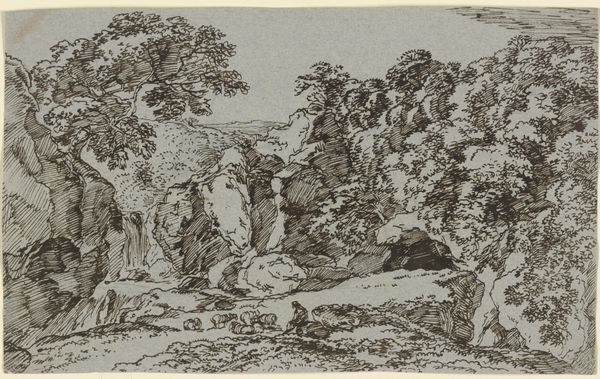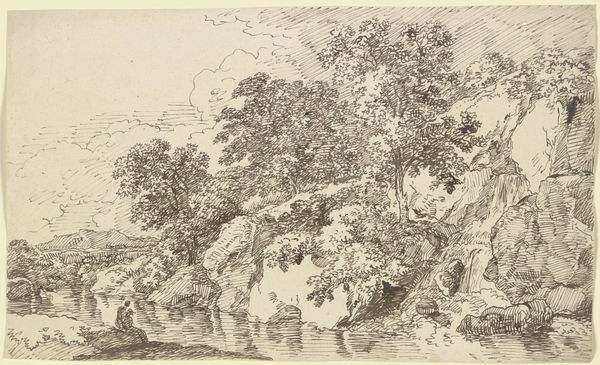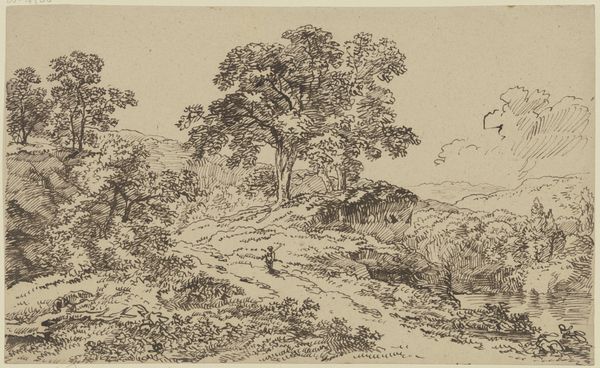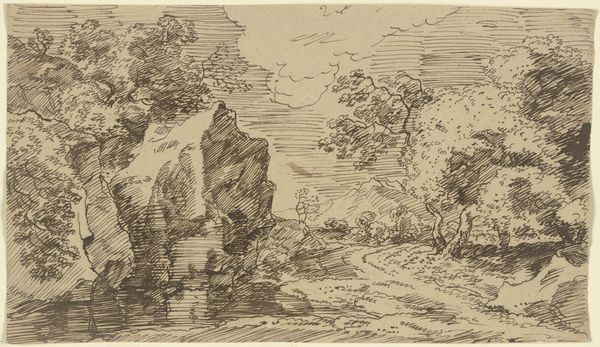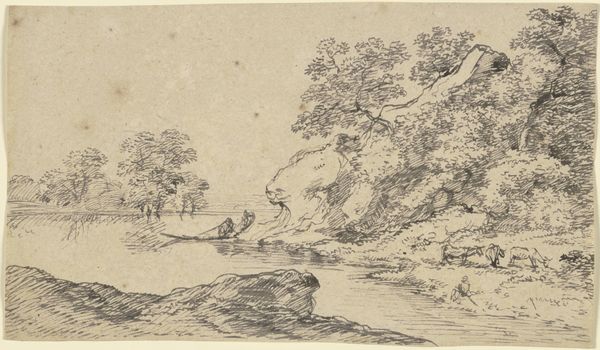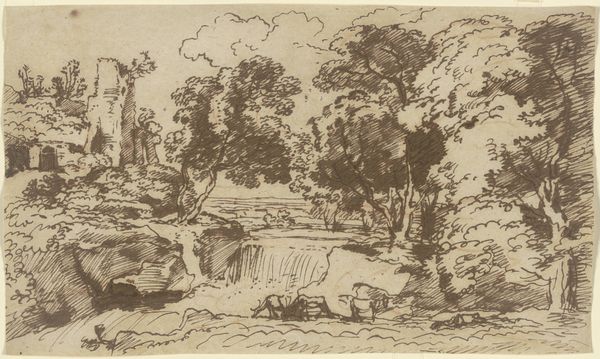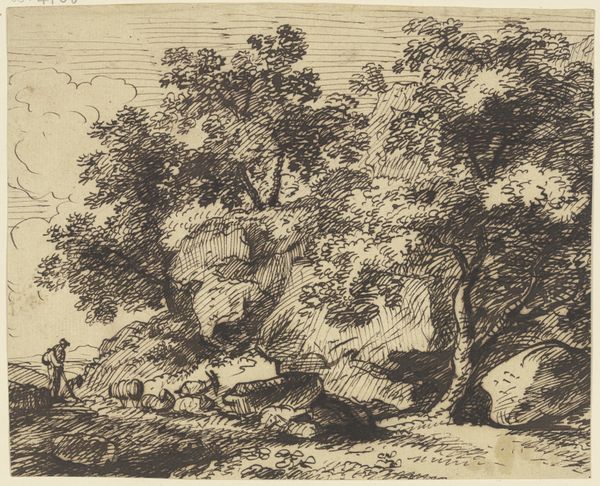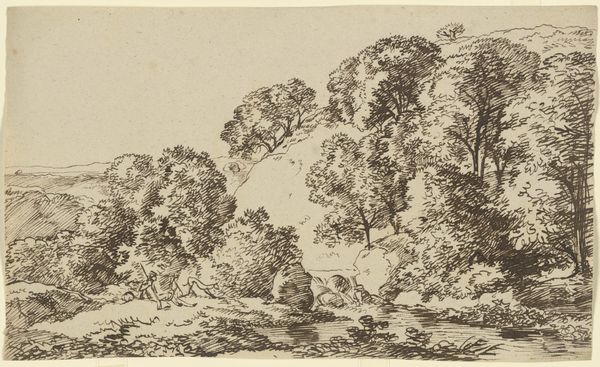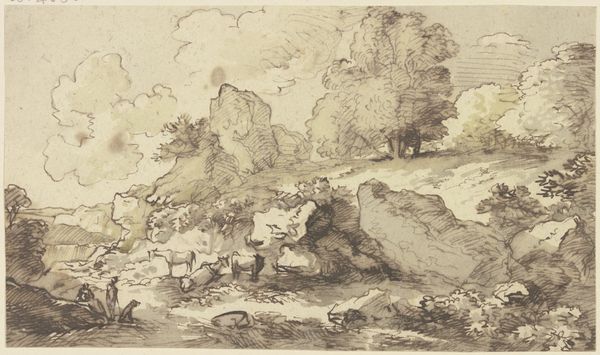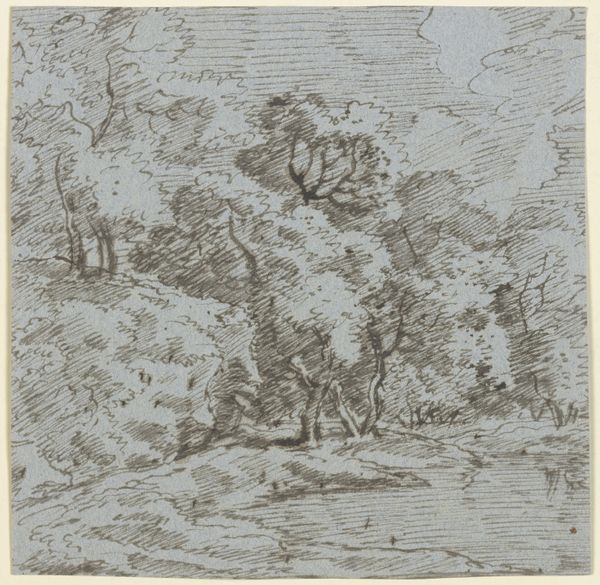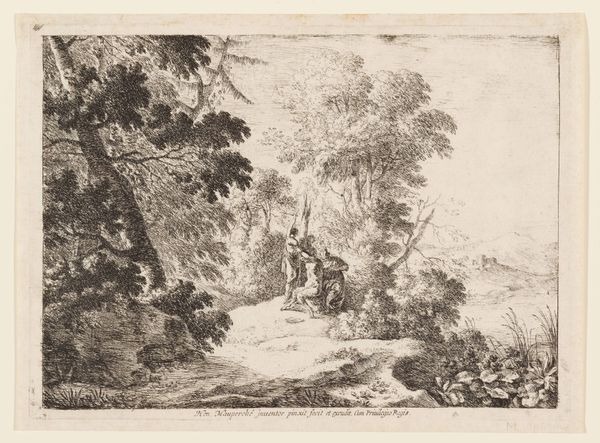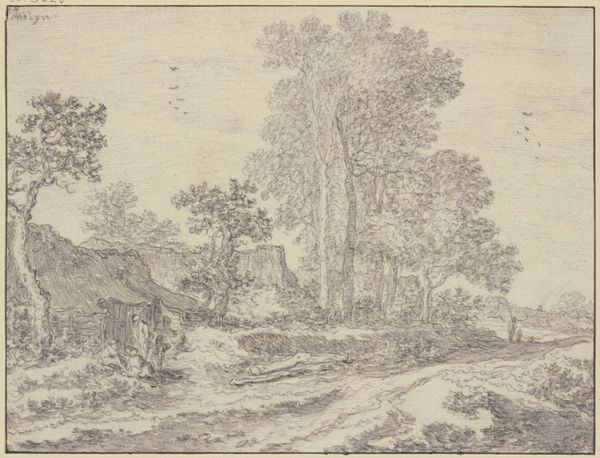
drawing, etching, ink
#
drawing
#
etching
#
landscape
#
etching
#
figuration
#
personal sketchbook
#
ink
#
romanticism
#
15_18th-century
#
line
Copyright: Public Domain
Curator: This is “Felspartie an einem Waldrand,” or “Rocky Landscape at a Forest Edge,” an etching with ink on paper by Franz Kobell. Editor: There’s a definite contrast between the delicate rendering of the foliage and the more forceful, craggy quality of the rocks. It gives it an unsettled feel, a push and pull of energies. Curator: Kobell was quite involved in the artistic and political currents of his time, especially in Mannheim and later Munich. Landscape art in this period was closely tied to ideas of national identity and romantic ideals of nature, you know. This piece comes to us from the eighteenth century. The vision here expresses enlightenment’s ideals about society’s role in the natural environment. Editor: And how nature, even in a seemingly innocuous landscape, can reflect larger power dynamics. Is the artist making a statement here, or just faithfully capturing the scene before him? We’re looking at hierarchies aren’t we: stone above vegetation; towering tree versus delicate flower. And where do humans fit into that hierarchy? The artist is trying to capture more than meets the eye. Curator: I agree, and what's fascinating here is how Kobell uses etching—typically used for reproducing images—to explore a unique and personal encounter with nature. His approach to mark-making is truly individual. The piece is almost sketching. Note how he captured light, and created spatial depth. I can say that landscape provided a potent space for contemplating societal transformation and the emerging roles of art. Editor: Thinking about the role of art makes me wonder: Who was this art for, anyway? Was it commissioned or did it evolve more spontaneously as the artist moved through his environment, and contemplated the changing social dynamics he was experiencing? The details aren't as sharply in focus in my opinion as they would be if commissioned by a patron. Curator: Precisely. And so, thinking about today, how do we reimagine nature—or the idea of untouched land, considering that no landscapes today exist outside political and social reality? I think this eighteenth-century vision reminds us we can't think of landscapes or anything for that matter as neutral or unbiased. Editor: Yes, thank you for that reminder. The composition stays with you long after you’ve stopped looking at it.
Comments
No comments
Be the first to comment and join the conversation on the ultimate creative platform.

